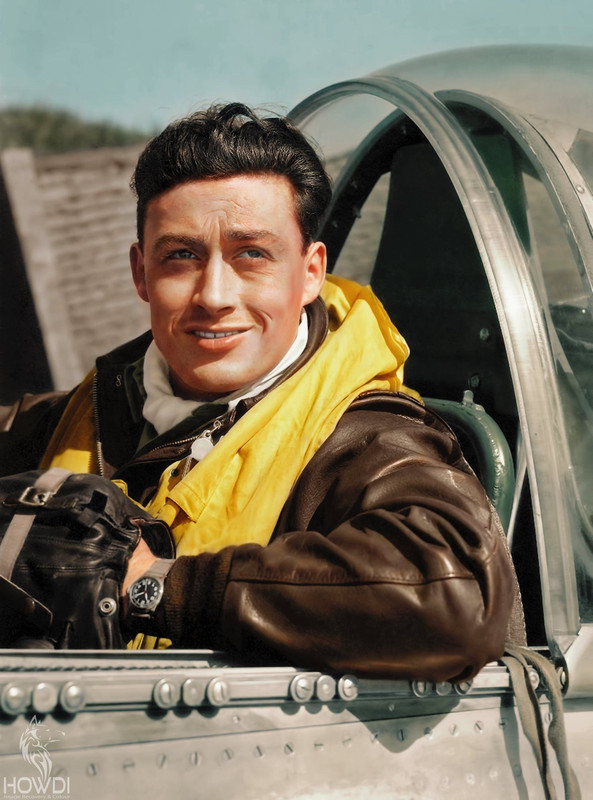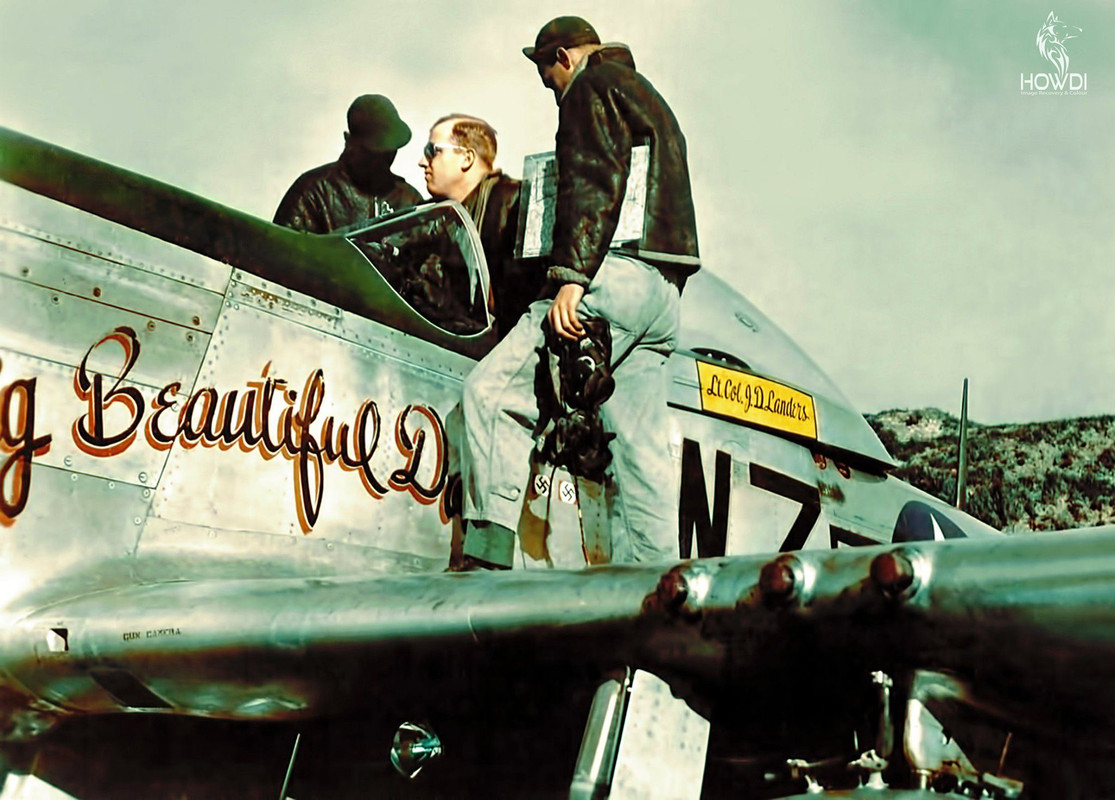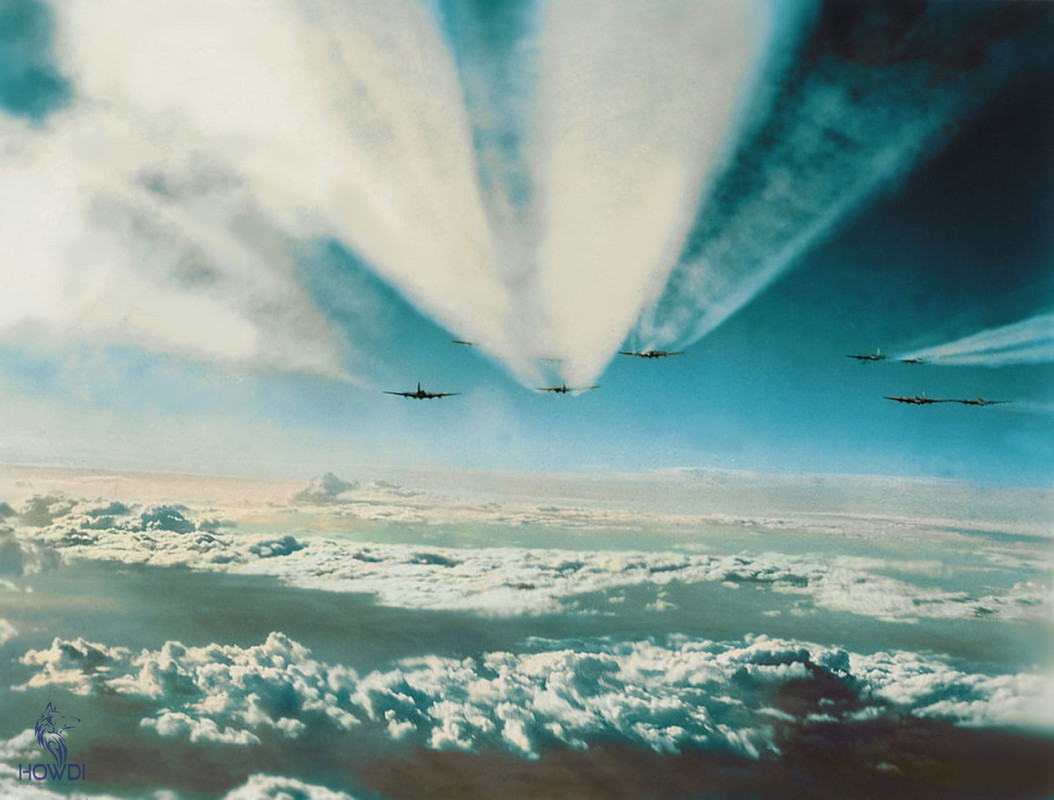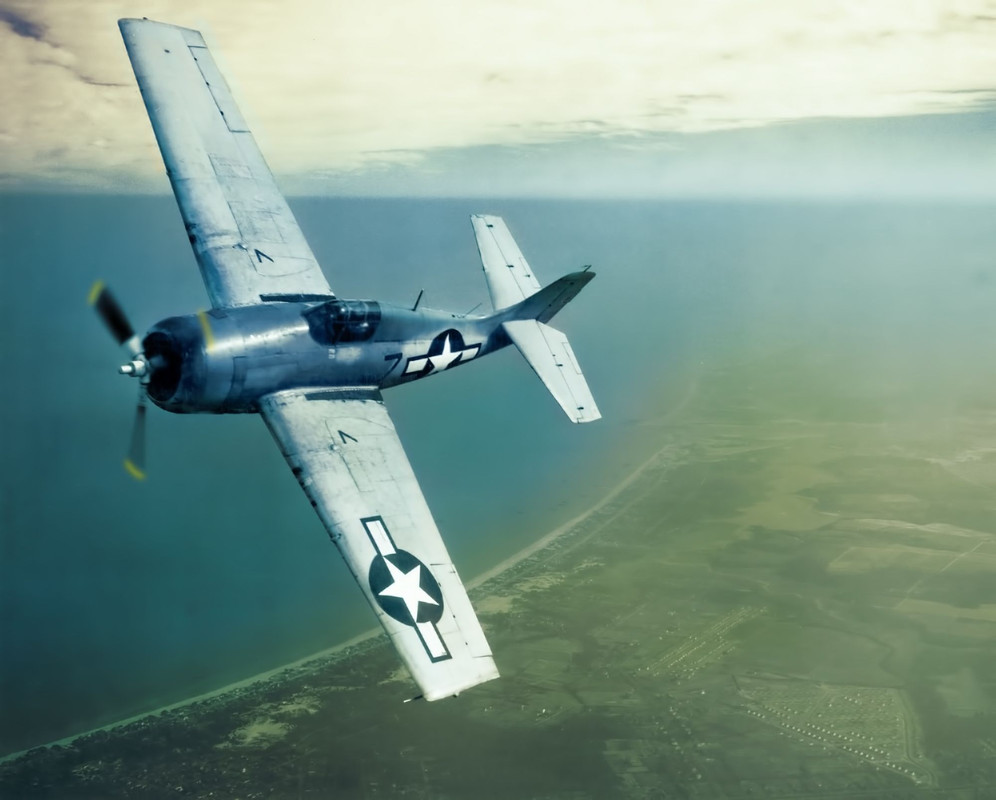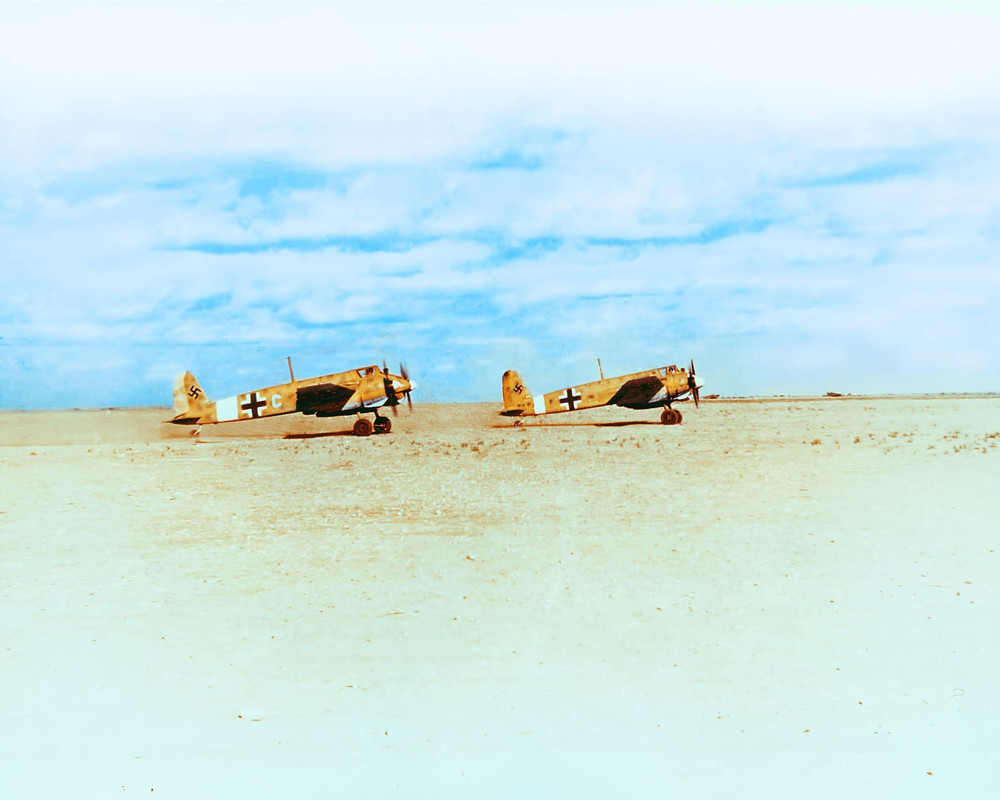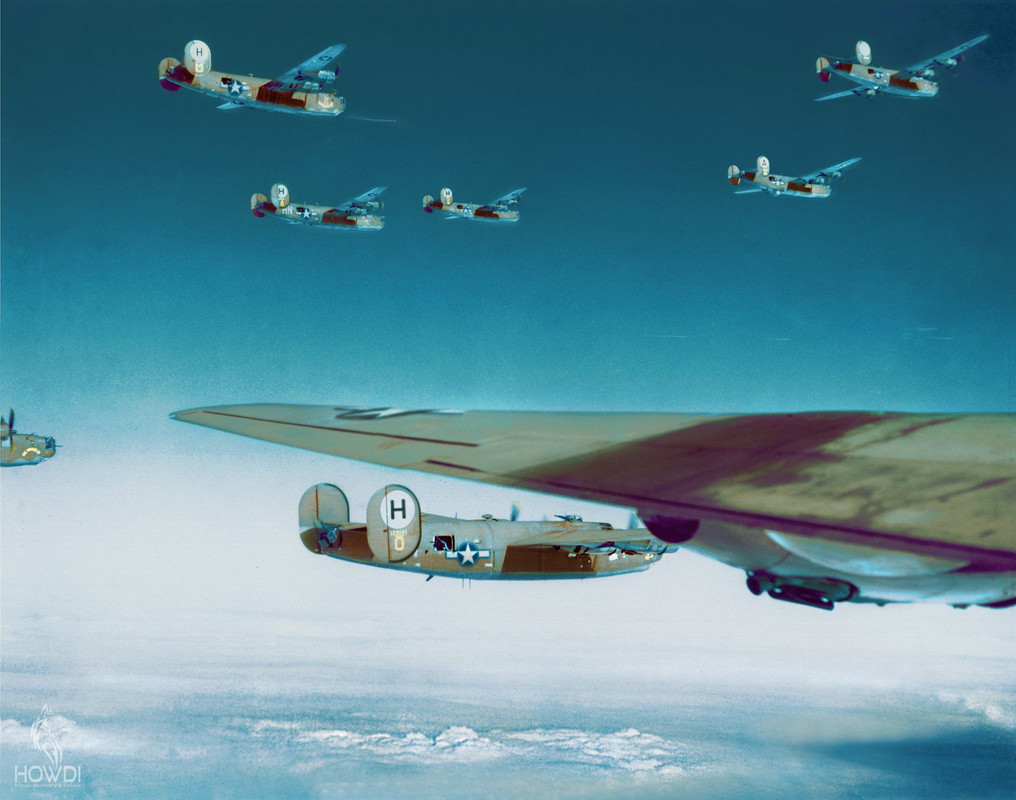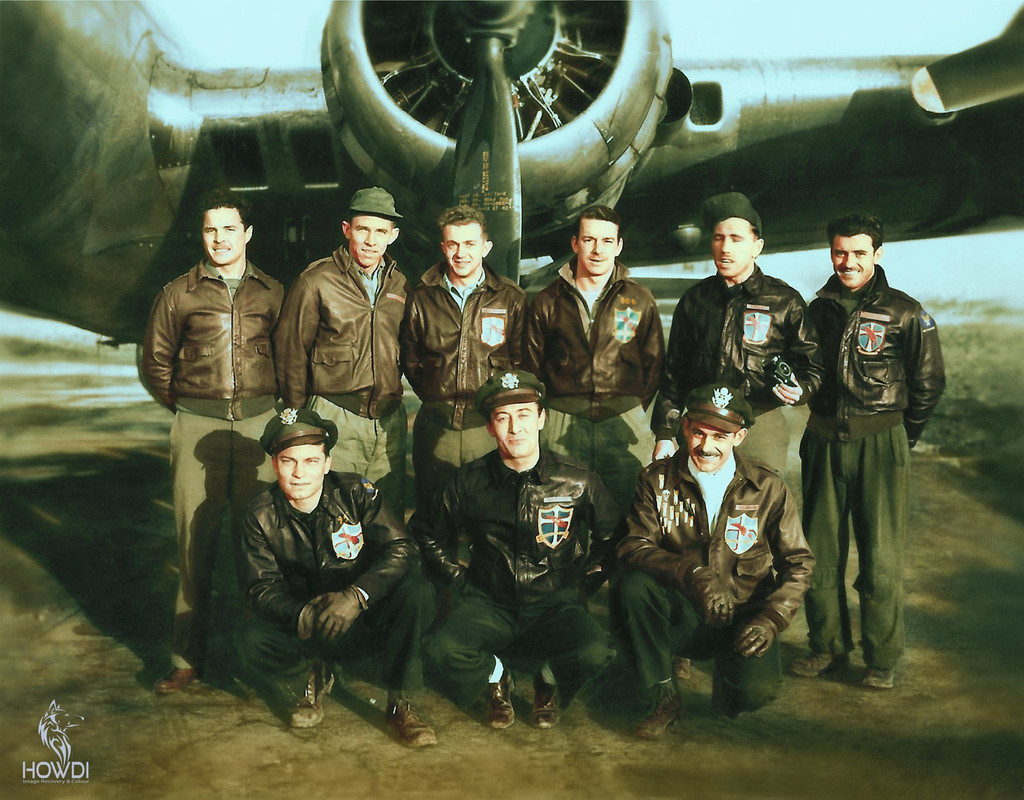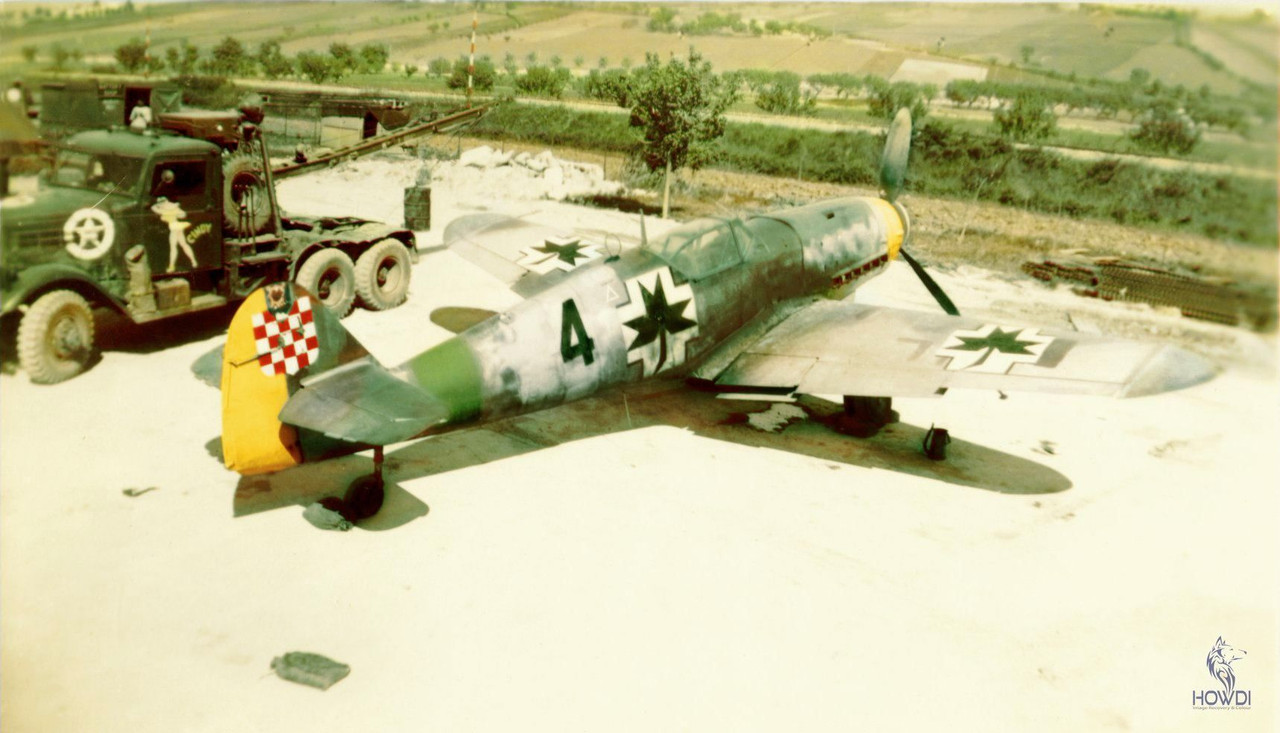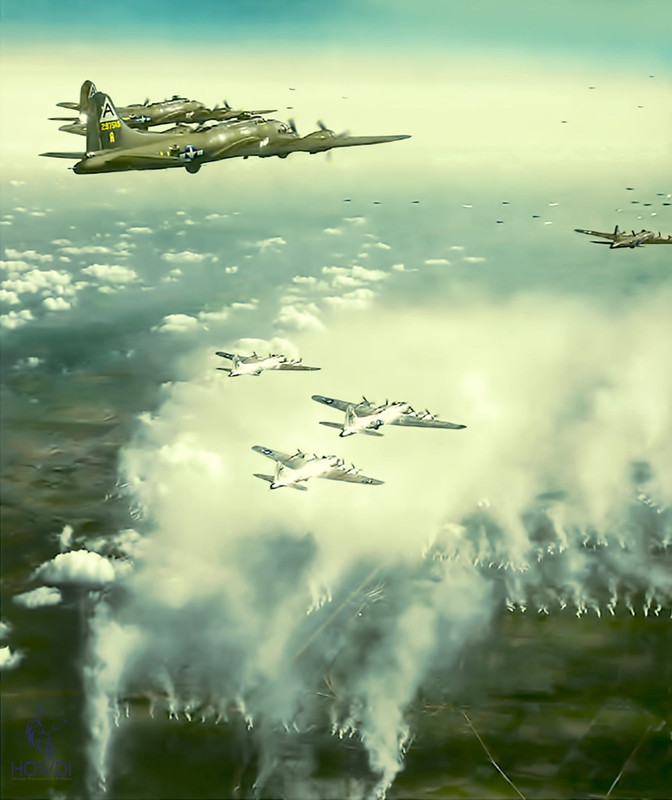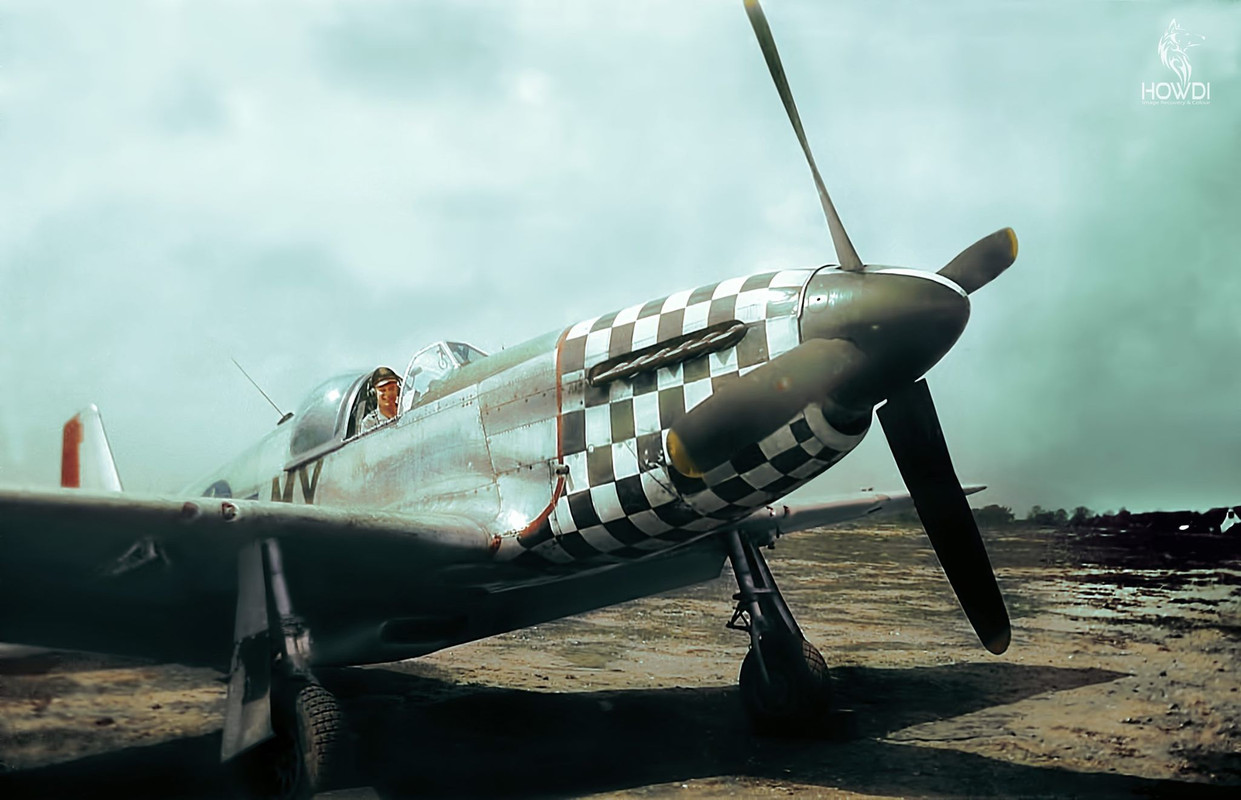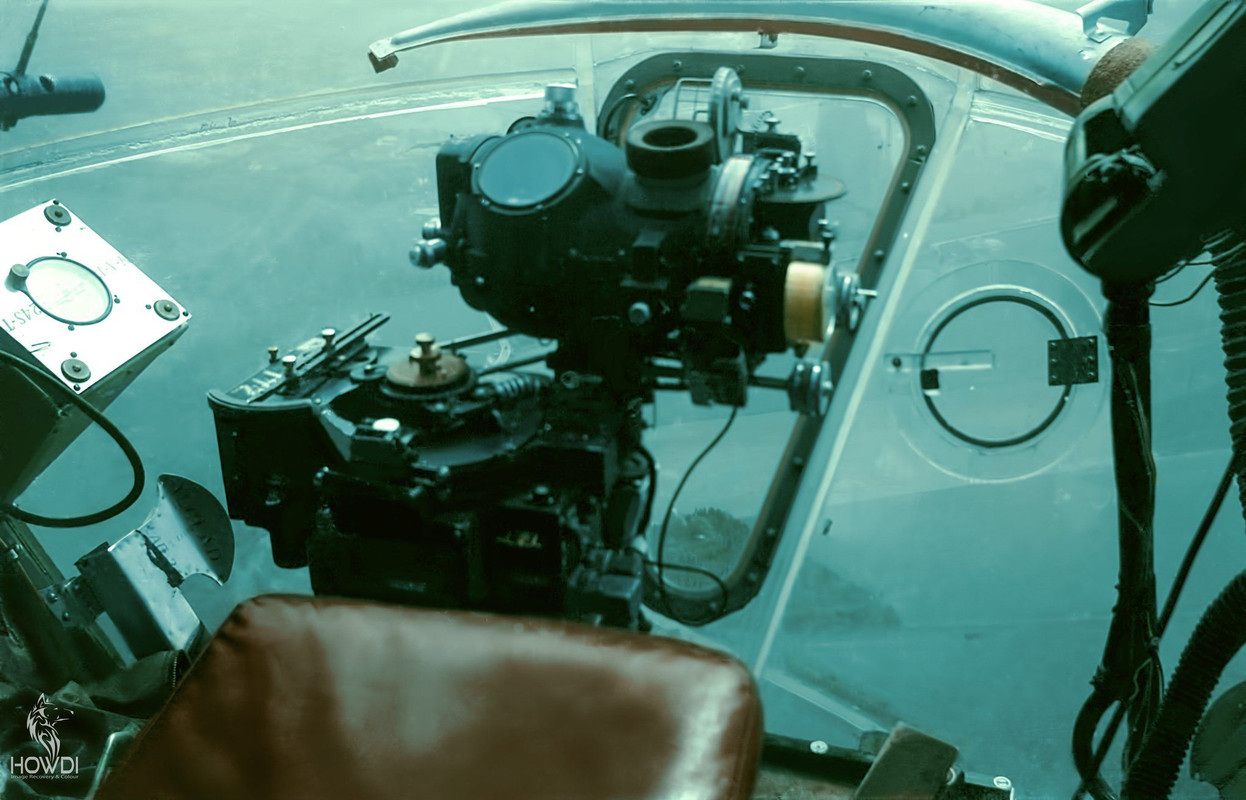[/url]
Lt.Col. John Dave Lander, CO of the 78th FG getting into his famous P-51D 'Big Beautiful Doll' 44-72218, WZ-I, in it's revetment at Duxford February 1945.
John Landers was born on August 23, 1920, in Wilson, Oklahoma. He entered the Aviation Cadet Program of the U.S. Army Air Corps on April 25, 1941, and was commissioned a 2d Lt and awarded his pilot wings at Stockton Field, California, on December 12, 1941. Lt Landers then joined the 9th Pursuit Squadron of the 49th Pursuit Group, flying P-40 Warhawks in the Pacific, where he was credited with destroying 6 enemy aircraft in aerial combat before returning to the U.S. in January 1943. He next served as a flight instructor before completing P-38 Lightning training and joining the 38th Fighter Squadron of the 55th Fighter Group in England in April 1944. Maj Landers took command of the 38th Fighter Squadron in July 1944, and then joined the staff of the 357th Fighter Group, flying the P-51 Mustang, in October 1944. While with the 38th, he destroyed an additional 2 enemy aircraft in aerial combat plus 1 damaged. Landers also destroyed 1 enemy aircraft while flying with the 357th. He returned to the U.S. in December 1944, and returned to Europe in February 1945 as commander of the 78th Fighter Group, where he served until June 1945, destroying another 3.5 enemy aircraft in the air, including a shared victory over an Me-262 jet fighter. Col Landers then served as commander of the 361st Fighter Group from July 1945 until his return to the U.S. in October 1945. He left active duty in December 1945, and worked in construction management for many years. John Landers died on September 12, 1989. During WWII, Col Landers was credited with destroying 14.5 enemy aircraft in aerial combat plus 1 damaged, and 20 more on the ground while strafing enemy airfields.
